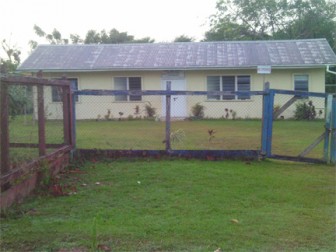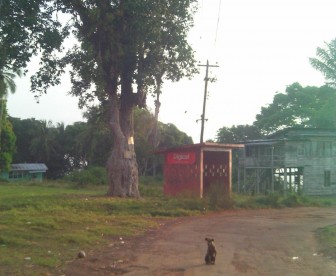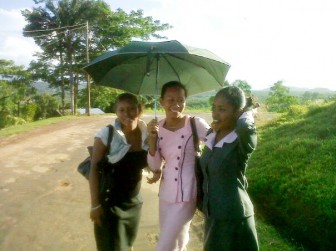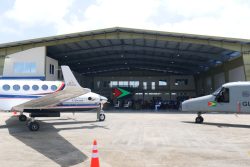Story and photos by Alva Solomon
Situated a few miles south of the tip of Guyana, Hosororo Hill is one of the many hill-top communities which dot the landscape of the Mabaruma sub-region in Region One.
The Amerindian community, which is home to more than 1000 persons, got its name from the Arawaks and signifies ‘running water.’

Hosororo Hill stands more than 300 feet above mean sea level and is said to be one of the most populated communities in the sub-region. Historically, it has been the breadbasket of the sub-region and on any given day fruits, grafted pears (seasonal) and cassava bread, among other food items, are easily available.
There is a nursery and primary school at the community while more than 90% of the residents attend the Roman Catholic Church located there. The Ministry of Health opened the doors of a small health centre and clinic in the village a few years ago, and today its reputation has grown to the level where not only residents from the community come there, but also those from neighbouring villages and the riverain areas.

Climb the hills in the area and scenic panoramas of nearby forested land as well as further afield unfold. The Aruka River, the Kurushima Hills and the other waterways are easily identified from the hilltops, and the picturesque views are a photographer’s dream.
Hosororo Hill was in the past a mainly Amerindian community, but over the past thirty years, there have been many mixed unions. In the early 19th century the Roman Catholic Church played a critical role in the development of the community, particularly in the field of education, and many of the more mature current residents observed that the discipline and spirit of determination which were evident in the youths of earlier times is sorely needed now.

Hosororo resident Phyllis Hernandez told Stabroek News during a recent visit that the area has seen improvement in terms of infrastructure and essential services. Transportation, she noted, has improved a great deal over the past decade.
“In the past… to travel from Hosororo to Mabaruma (administrative capital) you had to either catch a tractor or walk the three miles.“ She said that almost every hour, minibuses would pass along the public road linking the community to other areas. She said that in recent times, there has also been the advent of hire cars, which was a good sign.

“This is a good thing because it means we own people investing in the area and it mean too that the whole standard of living improve in some way,“ she said.
Over the years the area has evolved into a hot spot for small business enterprises such as chicken rearing and various farming activities. Many households have been involved in the rearing of chickens since there is a readily available market for the birds. At the same time, a number of small shops have opened their doors, and while some of them subsequently closed again, others weathered the difficulties and even expanded their operations.

While the area is generally quiet, on weekends the community comes to life with the hosting of social events such as a friendly cricket match involving another village, or a fashion show. Like most hinterland communities, Hosororo Hill is starved of entertainment, and according to residents, the area is in dire need of family-oriented activities, especially on holidays or at weekends.
In the past Hosororo Hill was home to an active agriculture station which the government established to develop the farming potential of the region. The plant nursery at the station was once viable and provided employment to many persons in the area. Households could also obtain plants at the nursery that were sold at a nominal cost.
The project has been scaled down over the years, as a consequence of a lack of interest from the community and meagre investment by government; however, more recently residents have called for its revival. The community was also well-known for its nibbi centre, which provided opportunities for many to earn an extra dollar. According to an elderly resident of the area, however, the tradition is almost in its dying phase, since the younger generation has shown little or no interest in weaving. He said that nibbi chairs, hats, vases and other household items have not been in evidence in recent times, and the craft is only practised by the few older folk who remain.

Residents also noted that there is need for a water treatment plant or a well to complement the existing pump station located miles away at Wanaina village. They said that during the dry weather many persons are forced to fetch water for miles since the reservoirs at the pump station would run low.
Over the years, many persons have relocated from the community to the coastland or other parts of Region One, and this has been cited as the primary reason for the disappearance of many of the traditional activities which were a key feature in the area in days gone by.
Hosororo Hill is accessible only by road and is located some three miles away from the administrative capital of Mabaru-ma to the south. The waterfront community of Kumaka, which is the business hub of the sub-region, is located less than three miles from Hosororo Hill, while the communities of Wauna and Tobago Hill lie some three to four miles north of the village.









